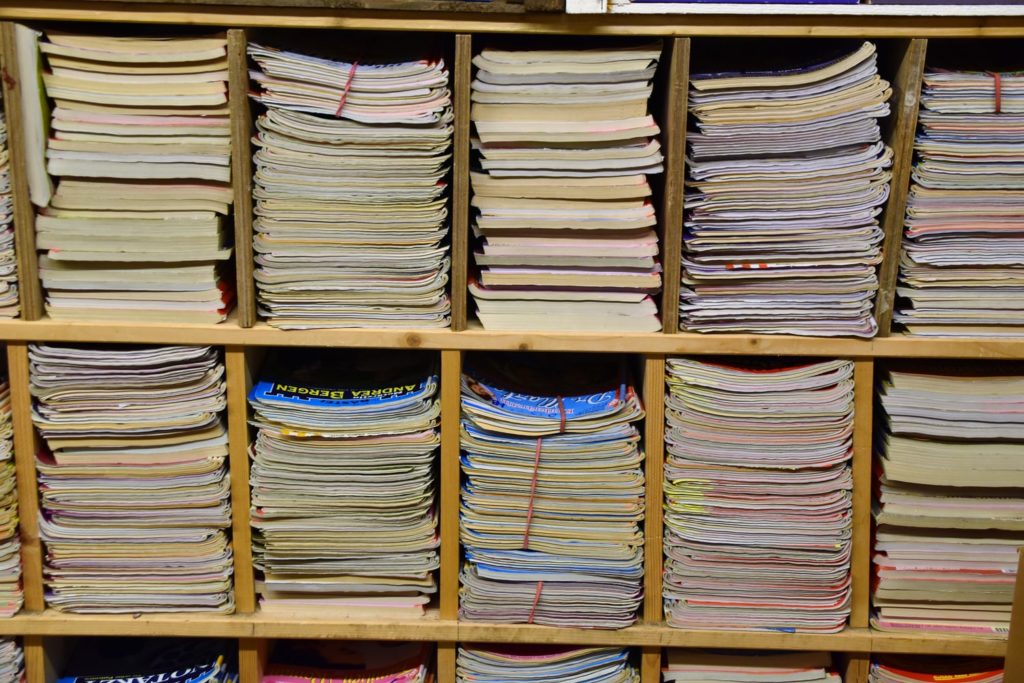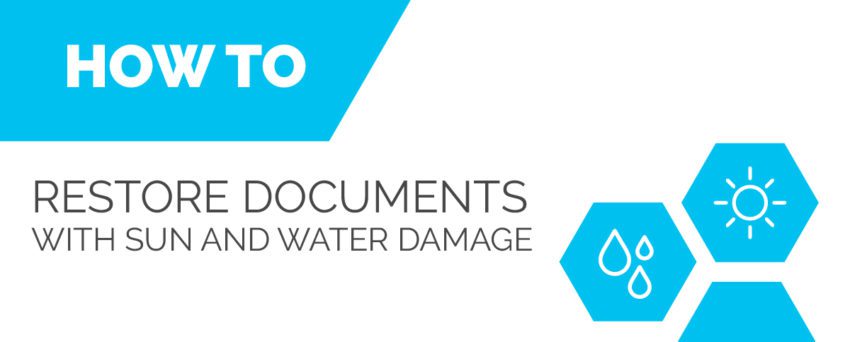08Jul 2019
How safe are your documents from sun and water damage? What is the process for document restoration for files which have been damaged?
You may have taken care to put all your important documents in folders and archived them in a file cabinet. Maybe this file cabinet is in the corner of your office, far away from any windows to protect them against sun damage. It may also be at the opposite end of the office far away from the kitchen to avoid any liquid spills. In fact, each sheet may be laminated so that oil from fingertips may not get in and destroy them. All in an attempt to prevent the need for document restoration, regardless of how long you have files in storage.
Stop us if this sounds familiar.
Professional offices spend a lot of time and money to protect their documents from sun and water damage. Oftentimes, these documents are important to clientele, and owners or professionals can’t afford to get them replaced or re-authorized. When you keep this in mind, it makes perfect sense that a person would go to such lengths to ensure their documents stay safe.
But what if they get damaged anyway? Does that mean they’re forfeit?
Sometimes yes, and sometimes no. In order to figure out how to best salvage your documents and reverse sun and water damage, we’ve put together a handy list for common paper restoration techniques. Check out our best tips below.

Document Restoration from Sun and Water Damage
Sun and light damage is more than just leaving a document in direct sunlight for more than an hour. When you break it down, different kinds of light, such as ultraviolet light, can hasten the discolouring or fading of your documents and cause near irreversible damage.
Similarly, water damage can mean anything from a document being drenched in water or speckled with water.
If you’re looking to restore documents plagued with sun and/or water damage, try the following:
- Paper repair. Sometimes, extensive sun exposure can break down the fibres of a document and leave it thin and more vulnerable to further damage. Consider repairing these tears as soon as you can. Some archivists use a particular Japanese paper called kozo that can bind the fibres together with the additional use of a paste.
- Remove excess fluid. Blot away excess water with a clean towel or sponge. Stay away from using newspaper as its ink can bleed onto other documents.
- Let the paper dry in a cool environment. You don’t want to make the water damage worse by scrubbing or transferring fluid from one area to the next, so increasing air circulation around the paper is your best bet for keeping everything in tact.
- Digital retouching. If you notice fading even after a document as dried, it may be time to take those documents and get them to a document scanning company who can upload and retouch clean images for you to work with going forward. This will also ensure you have a digital backup in case anything goes wrong.
Where does DOCUdavit Scanning Services come in?
Storing files in a filing cabinet can get tedious and expensive. Not only are you technically paying extra in square footage to hold the file cabinet, but you may have to replace the laminate sleeves every now and then or buy a whole new cabinet when your files get to be too many. Our solution? Try out a document scanning service like DOCUdavit that specializes in white glove scanning. White-glove scanning lends itself to documents that may not feed through imaging equipment, and that includes documents that may have been damaged by sun or water. Contact us today and learn how you can save time and money with a top-tier document management system.

